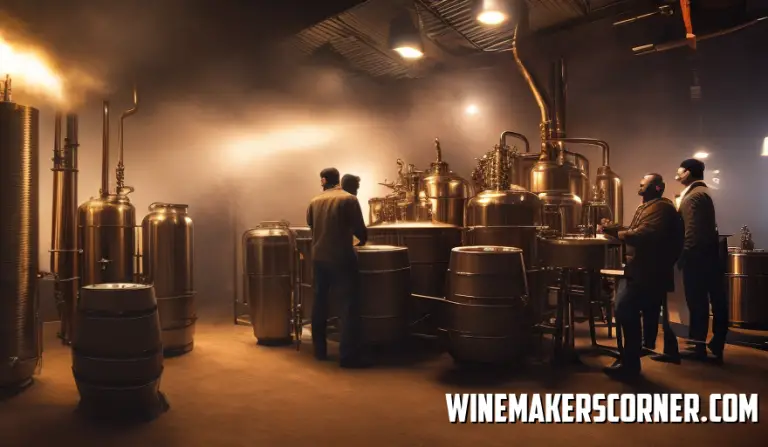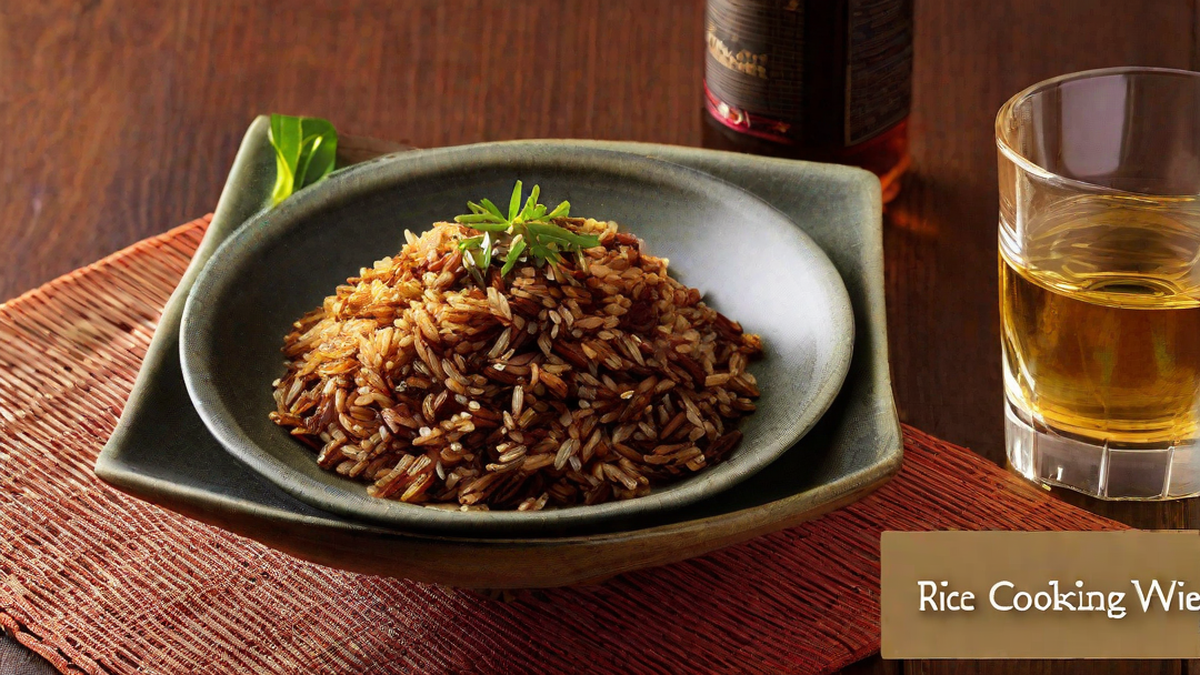Welcome, reader to the enchanting world of brown ales! It’s a realm where the rich colors of this gold whisper stories of both ancient brewing traditions and modern innovation. This isn’t a simple stroll down a familiar path; it’s an exhilarating adventure that uncovers the hidden secrets within every frothy glass. Are you ready for this thrilling journey? Prepare yourself fasten your apron tight because we’re about to dive into the art of brewing brown ales – from selecting top quality ingredients to mastering intricate mashing and boiling techniques navigating through the mysterious fermentation process all the way to creating your very own exceptional brew.. Hold on! There’s more in store for us! We’ll also explore how to complement these robust ales with food and troubleshoot any common brewing challenges that might arise. So put on your beer goggles. Lets embark, on this intoxicating adventure together!
Understanding the Basics of Brown Ales
Brown Ales, an often underrated member of the beer family have a long standing history in Europe spanning hundreds of years. They are easily recognized by their dark color and distinct flavor profiles.
So what exactly makes a Brown Ale unique? This particular beer style typically boasts an amber or brown shade that is achieved through the use of specific malts during the brewing process. The selection of malts is crucial as it shapes the character and essence of the product.
When it comes to flavor Brown Ales are truly fascinating. They strike a balance between sweet maltiness and subtle bitterness from hops. These beers often exhibit notes of chocolate, caramel, nuttiness or even hints of fruit. Quite captivating indeed!
Brewing Brown Ales is an art form that combines tradition with innovation. Brewers tweak recipes to cater to individual preferences and regional tastes. English Brown Ales lean towards mildness and sweetness while American variations tend to be bolder with a hop presence.
Temperature also plays a role in brewing this ale as it significantly affects the fermentation outcomes due to yeast activity at different temperatures.
In summary Brown Ales are not another ordinary beer variety found on store shelves. They encapsulate centuries traditions, within every bottle offering depth and complexity that truly sets them apart.
Choosing the Right Ingredients
Selecting the ingredients plays a central role in the art of crafting brown ales. This particular beer style, known for its richness and malty goodness demands specific components. Lets dive into this captivating process.
First and foremost the choice of malt holds importance. Brewers often lean towards malts as they bring forth that classic brown hue and impart flavors of delectable caramel and chocolate.
Secondly hops also play a role. When it comes to English brown ales English hop varieties such as Fuggle or East Kent Goldings are preferred. They provide a balance that complements the sweet maltiness perfectly.
Yeast is another ingredient in the brewing of brown ales. Brewers typically opt for yeast strains that produce fruity esters. This allows the flavors of malt and hops to shine through without being overshadowed by yeast characteristics.
Water quality should not be underestimated either. Optimal results are often achieved with water that possesses mineral content when brewing brown ales.
Lastly if desired adjuncts such as nuts or spices can be incorporated to add a layer of complexity to your brew.
Always remember that each ingredient has an impact, on the taste profile of your creation. Embrace experimentation as you seek out your blend!
The Art of Mashing and Boiling
The art of mashing and boiling plays a role in the brewing process of brown ales. It’s like a blend, where temperature and time work together to transform ordinary grains into intricate brews.
The first step is mashing. During this stage malted barley is soaked in water breaking down the starches in the grain into fermentable sugars. The outcome? A sweet liquid called wort.
After mashing comes boiling. Brewers heat up the wort along with hops infusing it with bitterness and aroma that give it its character. In ales hops are often used subtly allowing the malty sweetness to take center stage.
However it’s important to note that these steps aren’t set in stone. Small variations can significantly impact the flavor profile of your ale.
Take mash temperature as an example—it can. Break your brew! Higher temperatures produce unfermentable sugars resulting in sweeter and fuller bodied ales. On the hand lower temperatures yield drier beers with higher alcohol content.
The duration of boiling also matters—longer boils deepen the color and intensify flavors while shorter ones bring out shades and more delicate nuances.
Lastly lets not forget about water quality—it’s an ingredient, in beer production! The chemistry of water affects the pH level during mashing which then influences enzyme activity.
Brewing brown ales is truly a blend of science and creativity where every choice you make. From selecting the grains to controlling fermentation temperature. Shapes the masterpiece you create.
Fermentation Process for Brown Ales
Brewing brown ales is such a process. It’s like an art form combining tradition and a touch of science.. At the heart of it all lies fermentation.
Fermentation is where the magic really happens. You see, yeast, this organism consumes the sugars from malted barley and what it leaves behind is alcohol and carbon dioxide. It’s this extraordinary interaction that turns a sweet liquid into beer.
Now lets explore the world of brown ales. These brews have been evolving for centuries in England to achieve that nutty caramel rich flavor we enjoy today. The fermentation process for ale is quite unique; it requires careful attention to maintaining the right temperature.
If it gets too hot or too cold yeast activity can be significantly affected. The ideal conditions usually range between 68 72 degrees Fahrenheit for ale yeasts which’re top fermenting strains. By keeping the temperature consistent we ensure that yeast performs steadily resulting in flavors and fewer unwanted notes.
Following fermentation comes the crucial phase of fermentation or conditioning – something particularly important, for brown ales! This stage allows flavors to develop and mellow out while any undesired sediment settles down. It’s during this time that brown ale gains its complexity and depth.
Finally when brewing brown ales patience truly pays off – rushing through the process can jeopardize both flavor profile and clarity.
Remember, good things come to those who wait and the same goes for quality!
So that’s it. An exploration of the art of brewing brown ales! It’s a method deeply rooted in tradition drawing on the principles of chemistry and microbiology.
Bottling Your Brewed Brown Ale
Brewing Brown Ales can be a rewarding experience. However the final step of bottling your brew is equally important. It requires precision, patience and a touch of skill.
First and foremost cleanliness plays a role. Even the slightest trace of impurities in your bottles can negatively impact the flavor of your ale. Make sure to sanitize each bottle before use.
Next comes priming, which involves adding sugar to the brew before bottling. Why do we do this? Well it helps with carbonation. The remaining yeast in the ale consumes this sugar. Produces carbon dioxide as a byproduct.
Now onto the filling process! It’s quite an art in itself. Fill each bottle over halfway and then gently tilt it to ensure its completely filled. This technique minimizes oxygen exposure, which could otherwise compromise the quality of your beer.
Sealing is up next! A secure cap ensures that no air enters or escapes from the bottle during storage.
Lastly lets talk about storage time! Its recommended to store brown ale in a cool and dark place for at least two weeks before enjoying it.
When you bottle your brewed ale it’s not just about containment—it’s also, about protecting and preserving all those hours you’ve invested in brewing. The bottling technique will safeguard your efforts and guarantee that each sip is just as perfect as you envisioned it.
Pairing and Serving Suggestions for Brown Ales
Brown ales are quite popular due to their qualities. They have an malty taste often accompanied by hints of caramel or chocolate making them an excellent choice for pairing with food. Now lets talk about how to serve them and which foods they complement best.
The serving temperature is crucial when it comes to enjoying ales. It’s best to have them at a cool room temperature of around 55 degrees Fahrenheit. If the ale gets too cold you run the risk of muting the flavors of malt that define this particular style.
Pairing ale can be quite an adventure. Their roasted profiles go hand in hand with grilled meats splendidly. Just imagine savoring a brown ale while taking bites of a perfectly seared steak. The caramelized crust on the meat echoes the beers malty goodness in harmony.
Don’t limit yourself to just meats! Ales slightly sweet undertones also work wonders when paired with spicy foods. Picture yourself indulging in some Thai or Indian cuisine while sipping on your ale; it not only tames the heat but also enhances all those wonderful flavor nuances.
Calling all cheese lovers! The creamy texture and sharp taste of cheddar cheese create a partnership with brown ales smooth body and mild bitterness. This combination takes both elements to heights delivering an unforgettable experience.
Lets not forget about dessert! Absolutely indulge in pairing your ale with desserts that feature nuts or chocolate for a sweet finale, to your meal that will leave you yearning for more.
In summary it is important not to limit the categorization of ales as solely “pub beers.” They can be companions, to a wide range of cuisines enhancing the flavors and intricacies of different dishes. Whether enjoyed with grilled meats, spicy dishes, flavorful cheeses or indulgent desserts these brews consistently showcase their ability to adapt and enhance the dining experience.
Troubleshooting Common Brewing Issues
Brewing brown ales can be a satisfying experience. However there are a challenges that may arise along the way. It’s important to spot these issues on and troubleshoot them effectively.
One common problem that brewers often come across is a taste in their brews. This can be caused by factors such as water quality, fermentation temperature and yeast health. If your beer has an sour flavor it could be due to using poor quality water. To solve this opt for filtered or spring water when brewing.
Fermentation temperature is another culprit behind off flavors. If it gets too hot you might end up with fruity or solvent like tastes. On the hand if it gets too cold your beer may have a buttery or overly sweet profile because of incomplete fermentation. Make sure to keep the fermentation temperature within the range for the specific yeast strain you’re using.
The health of your yeast also plays a role! Unhealthy yeast can lead to flavors or even halt the fermentation process entirely. It’s crucial to provide yeast nutrients to ensure vigorous fermentation without any hiccups.
Another common issue is cloudiness in the product. When pouring ales into a glass they should have a clear appearance; any haziness suggests an issue with filtration or settling during the conditioning stage of the brewing process.
Insufficient carbonation can also pose challenges, for beginner brewers.
This problem occurs when the beer tastes flat and lacks the desired sensation that most beers have. One possible solution would be to adjust the amount of priming sugar used during the bottling process or to check if your kegging system is functioning properly if you prefer kegging your brews.
Lastly lets talk about fermentations – when yeast activity seems to stop prematurely resulting in higher than expected final gravity readings from hydrometer tests done after the fermentation phase. There could be factors contributing to this such as not using enough yeast (low pitching rates) having worts with high sugar content (high gravity) low nutrient levels or extreme temperatures (too hot or cold) among others.
Dealing with brewing challenges requires patience and practice –. Don’t lose heart! Remember that experienced brewers encounter difficulties from time, to time; what sets them apart is their ability to effectively navigate through these obstacles.
Experimenting with Flavors in Brown Ales
Brown ales, an flavorful type of beer offer endless possibilities for experimenting with flavors. Brewers have a range of ingredients at their disposal to infuse these beers with unique tastes and aromas.
Lets talk about the malts used in brewing ales. These aren’t your malts; they are specially roasted to achieve that distinct brown color. This roasting process also adds flavors to the brew like hints of caramel, chocolate or even coffee. By playing around with combinations of malts brewers can discover some truly exciting results.
Hops also play a role in flavor experimentation. While they tend to be more subdued in ales compared to other beer styles they still contribute significantly. Hops with bitterness can help balance out the sweetness from the malt while certain varieties bring fruity or spicy undertones.
But it doesn’t end there – some inventive brewers incorporate adjuncts like nuts, fruits or spices into their recipes. A touch of hazelnut can enhance the nutty character found in many brown ales; cinnamon or vanilla might beautifully complement its caramel notes.
Lets not forget about yeast – often underestimated but incredibly influential in shaping the taste profile of beer. Different strains distinct flavors during fermentation; think fruity esters or spicy phenols perhaps? Brewers are always up, for experimenting with these well!You know when it comes to brewing ales it’s like orchestrating a symphony of flavors. Each ingredient has its role to play but they all come together in perfect harmony to create that ultimate masterpiece; your glass of beer.
Lets not overlook the importance of water. It actually makes up about 95% of beer! The minerals in the water can impact things like efficiency during the mashing process and even the health of the yeast, which ultimately affects the flavor.
When you experiment with flavors in brown ale brewing it’s not just about being creative; it’s also, about understanding how various elements interact within this intricate world of brewing.




